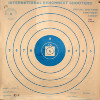There have been extended discussions about this subject on all the boards, the discussions getting pretty technical.
Basically, there are two types of gauges, which vary in use depending on how they hold the cartridge and measure it. Since the two different types measure in different ways, they give different results. I have both.
The first is the one by Hornady, which holds a cartridge by its base, then lets you correct runout.
The other is by Sinclair. It supports a cartridge case at two points, but doesn't let you correct excessive runout.
Both are supposed to do a good job of measuring runout, providing the case has no defects that might skew the results.
As to whether using such a gauge is needed to wring the last amount of accuracy out of a cartridge is hotly debated. I have no answer because I have not gotten around to running any tests. At some point I plan to do so, but it won't be any time soon.
I suppose if you are shooting a big cartridge in competition over a l-o-n-g-g-g distance (e.g. 1000+ yards), it might be worthwhile.






